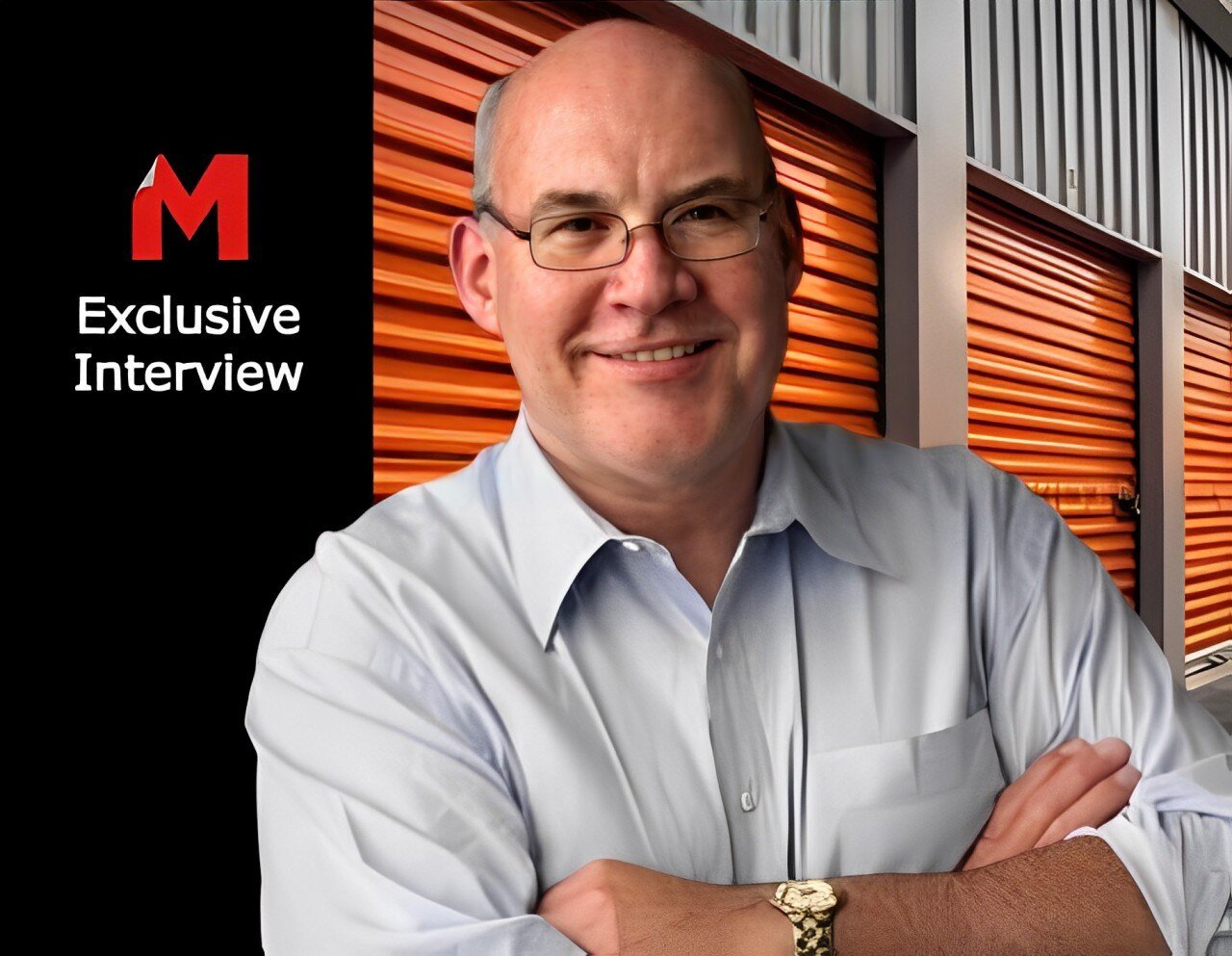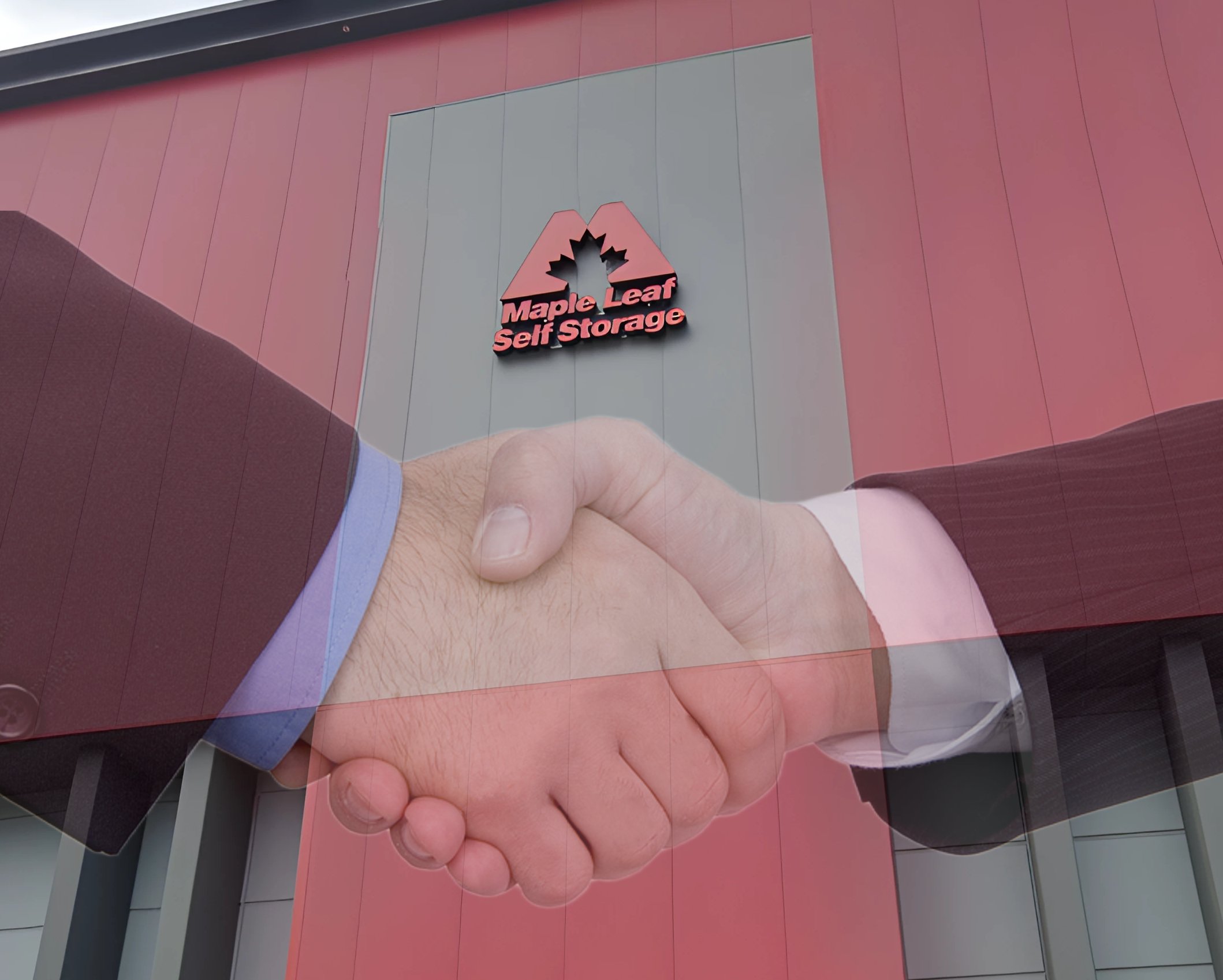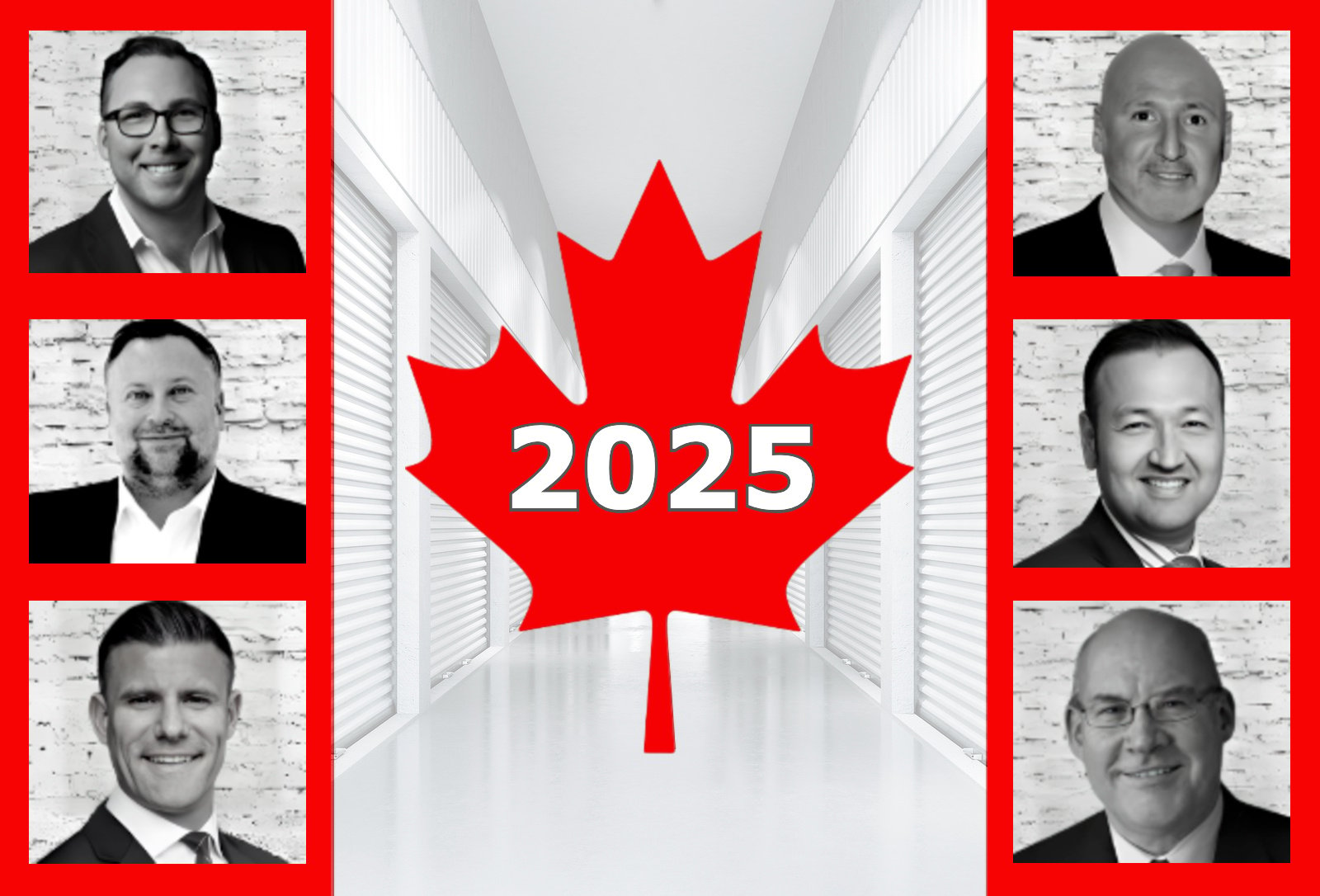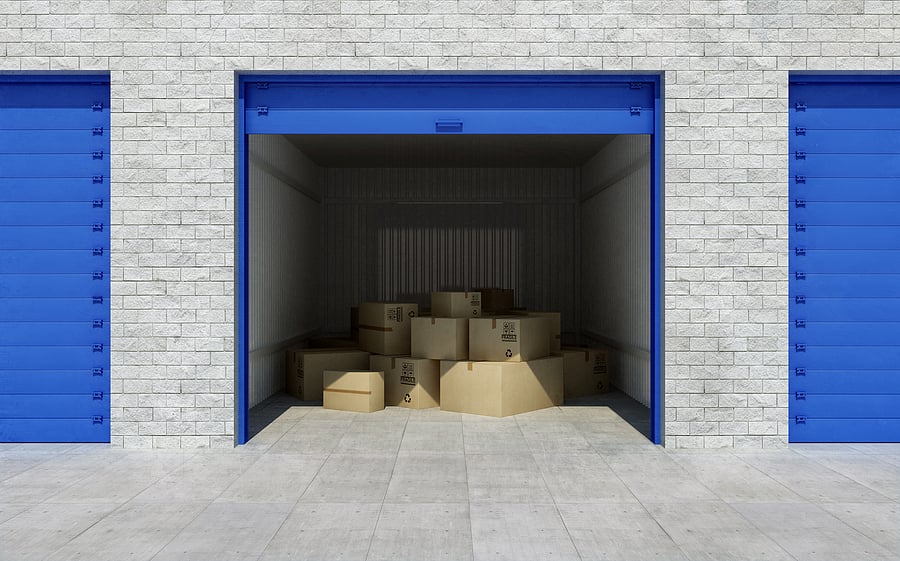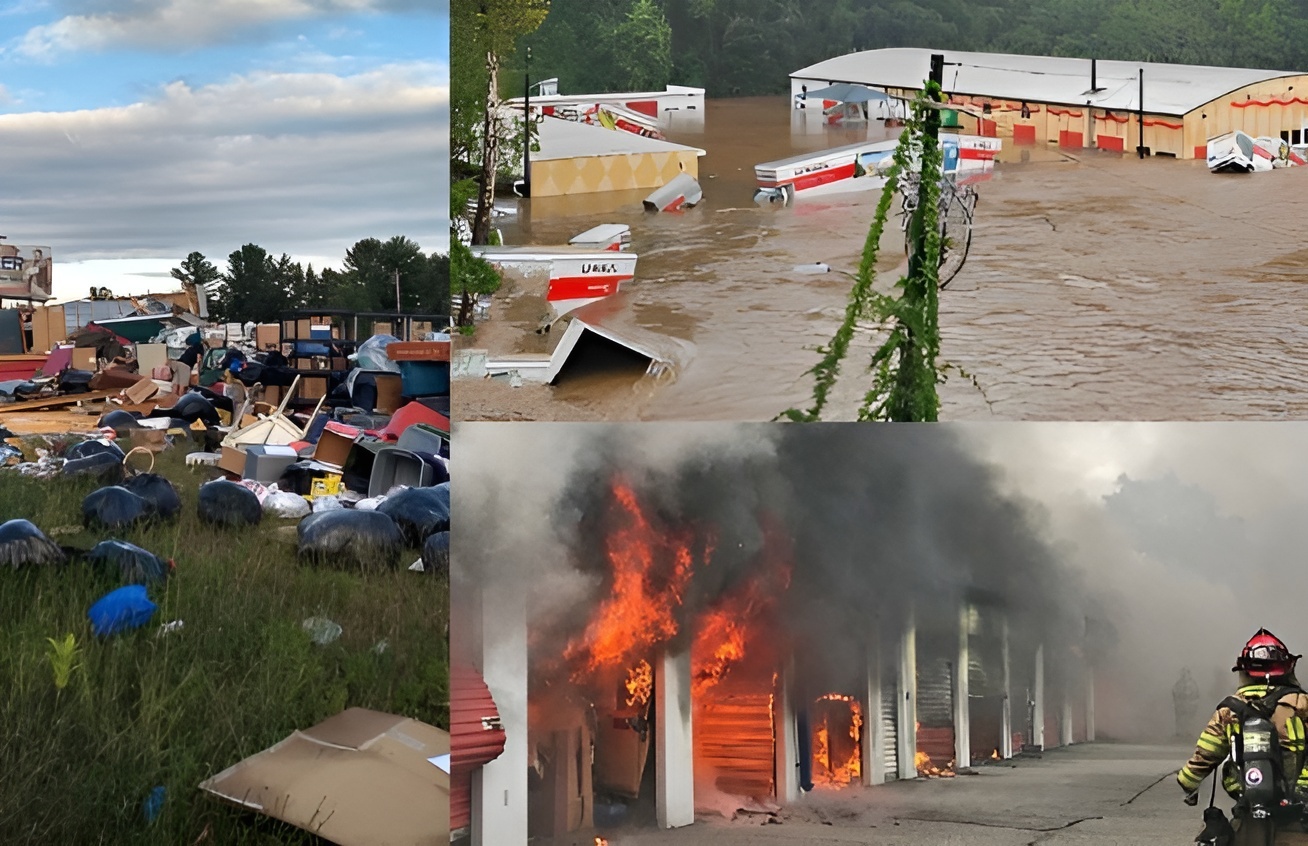The Descending Economy
Is Plunging Performance Problematic?
At the moment, descent is not a problem. However, it is a situation most segments of the economy are beginning to confront—that we are over the peak and heading down the other side of the curve.
Self-storage is slipping into the same trend line. After years of high occupancy, great returns, vast amounts of new construction, and high demand for the product, most of those pecuniary points are easing, which is OK, because this pull-back, whether slight or slightly more than expected, will be doing so from record levels of performance. It’s not much different from the stock market. If we lose a percentage point or two, isn’t it better if it happens when the market is at peak than at a weak point?
A number of indicators are intimating the self-storage market will soften starting around mid-2019. The most emotive is something called the buyer/seller gap. Devon Self Storage of Emeryville, Calif., has not acquired as many assets as it would have liked in 2018, because as Kenneth Nitzberg, chairman and CEO, comments, “Sellers’ expectations, fueled primarily by the brokerage community, is out of whack with reality. Asking prices are crazy; and if the seller doesn’t get the numbers the brokers have promised they would get, the property is pulled from the market.”
Bill Alter, managing director of the Self Storage Group at Rein & Grossoehme Commercial, works the Arizona market where is company is based. He has noticed buyers are pulling back as they see more risk in an over-built market. As he says, “The gap between seller expectations and buyer expectations has been widening, resulting in fewer transactions.”
When the gap between buyer and seller expectations starts to permeate a market, it results in a slowdown until it becomes clear that new development has not impacted revenue and occupancy or, the more likely scenario, stuff happens such as construction loans come due or a partnership falls apart.
Somehow that gap needs to shrink either by increasing expectations of the buyer or decreasing expectations of the seller and “that could take years,” says Alter. “We have been on the opposite end of that for a decade. I hope the correction doesn’t take nearly that long, two to three years at best.”
Transaction Market
The transaction market for self-storage, as Nitzberg and Alter suspected, has been slowing down. The market peaked at around 500 deals in 2016, reports John Chang, senior vice president and national director of Marcus & Millichap Research Services in Phoenix. Since then, the market has been stair-stepping downward to 450 transactions in 2017 and to an expected 400 transactions this year.
“We have been losing about 10 percent velocity on a year-over-year basis,” says Chang, “but putting that in context, that is still about 40 percent more deals than we saw at the peak of the last cycle in 2007.” As for 2019, Chang is not making a prediction as there are too many factors influencing the self-storage market. To the positive, the appetite for these assets continues to be strong, but, to the negative, interest rates are rising, and lending requirements are tightening.
Part of the problem for self-storage is that most of the recent transactions have been smaller as compared to big portfolio sales over the past five years. There was only one noteworthy portfolio sale in July 2018, when National Storage Affiliates Trust formed a joint venture with Heitman Capital Management LLC to acquire 112 Simply Self Storage facilities for $1.325 billion.
“Even though there hasn’t been as many portfolios sold in 2018, we haven’t seen a real slowdown in transactions in 2018,” says Jeff Shouse, an executive managing director for Colliers International in Sacramento. “I don’t expect a big change in 2019, unless something dramatically happens with the economy. 2019 will be very similar to 2018, which was similar to 2017.”
Over at US Storage Centers, Charles Byerly, president and CEO, says 2018 was slower from a transaction perspective than 2017 for his Irvine, Calif.-based company. “We are slowing down because we are using real assumptions as rents are tapering off and, although lease-ups are absorbing, it is not at the rents anticipated. With the groups that we know, the transaction pipeline is smaller than the previous year.”
New entrants will take up some of that slack because these players, as Byerly says, “are accepting a different return threshold or they don’t know that they are accepting a different return threshold.”
Byerly’s prediction: 2019 will track 2018 but slower than the 2015 through 2017 years.
The two outliers in the Ouija Board game are Jonathan Perry and Bill Alter. The latter gentleman predicts transaction volume will drop by “at least a third as buyers are still going to be looking for deals and developers for sites, but they will be late for the party.”
On the opposite end of the prognosticator continuum sits Jonathan Perry, chief investment officer for Memphis-based Jernigan Capital, who observes, “The tail-end of the prior acquisitions cycle was weighted toward the latter half of 2016; that was the last part of the cycle where you saw a number of stabilized assets and portfolios trade. Most of those opportunities cleared by 2017, which resulted in a lull in acquisitions transaction volume that hasn’t picked up to a meaningful degree.”
For that reason, Perry says, “The acquisition market will pick up in 2019 as newly developed projects begin to mature. The opportunities are to acquire assets developed in this cycle that are in various stages of lease-up.”
Copious Capital
Cheap money and a wave of new capital sources have kept the self-storage transaction market very fluid over the past half-decade. While the dollars are getting more expensive, the number of investors who want to play in the capital side of the self-storage arena hasn’t ebb.
“There continues to be a tremendous amount of institutional capital looking for opportunities to get into the space, all driven by historical performance in the sector,” says Perry.
One of the weird outcomes of that demand is what has happened with cap rates in the industry. “Rising interest rates at some point should have an impact on cap rates,” Perry avers. “Yet, given the demand for product, I don’t see cap rates moving in a meaningful way in the foreseeable future. Over the course of the last 12 to 18 months, cap rates remained flat or moderately down, meaning valuations have gone up in certain markets, notwithstanding the recent uptick in interest rates.”
Liquidity in the marketplace is still very strong, Chang concurs. “Banks are lending, and investors are well capitalized, but underwriting has tightened,” he says. “And a lot of investors are increasing down payments in order to meet internal yield requirements–more skin in the game.”
A well-capitalized operator should have no issues getting a loan, but banks are watching for newcomers, investors buying in overbuilt markets, and assets in weaker, smaller markets.
Underlying all this is the rising cost of capital.
Short-term rates, usually based on prime or LIBOR, are really tied to the FED target rate (interest rate charged by a depository institution). If the target rate increases a quarter of a point, prime and LIBOR will likely increase near the same amount. Loans that are tied to short-term rates, such as construction loans, are getting more expensive. Target rates have moved up three-quarters of a percent this year and could be bumped up by a quarter of a point at least two more times in 2019.
“In this cycle, construction financing mortgage rates had been less than permanent or take-out financing rates,” says Gussis. “Now we are getting to the point where construction financing rates will likely exceed fixed-rate financing rates. Long-term rates are not quite so related to the FED target rate. Those are more associated with the Treasury. Long-term rates (for permanent financing) have moved up less than short-term rates. As mortgage rates increase, debt service payments rise, which causes stress on loan sizing on new loans.”
Here’s another way of looking at the effect of higher cost of capital:
“A deal that is a homerun at a four percent interest rate doesn’t pencil at a six percent rate,” says Nitzberg. “That’s a big jump. If you are borrowing $10 million, a two percent jump is $200,000 a year difference in interest cost. If the deal worked at four percent and you add $200,000 in additional costs, the existing proforma doesn’t work anymore. We have seen T-bill rates in the past few years go from 50 bps [basis points] to 300 bps. Most loans are tied to some index, usually T-bills. That changes the numbers dramatically.”
New Development
From 2012 to 2015, new development for self-storage expanded quickly but at a measured pace, reaching $955 million in annual construction spending, Gussis reports. Then things started to go a little crazy with annual construction spending for self-storage more than doubling to $1.914 billion in 2016, almost doubling again to $3.979 billion in 2017. Gussis predicts annual construction spending will hit $5.403 billion in 2018. As for 2019, he adds, “We have likely reached our peak in 2018, and we will likely start to see development numbers go down as it may be more difficult for investment returns to work out.”
Yes, 2018 will top 2017 in new development. “And in the first half of 2019, we will see development at the same pace of 2018, because once a project gets to a certain point in development, it is hard to put the brakes on,” adds Alter.
There have been significant changes in regard to labor and other development costs that will “slow or halt a lot of facilities that were expected to come out of the ground,” says Shouse. “That’s one of the reasons why things have slowed down, because people’s proformas were too aggressive. That will factor into the percentage of deals that will cross the finish line.”
The projects that came out in 2018 and are close enough to be under construction early in 2019 had been in the planning process for a long time, which means, “We are going to see a substantial slowdown in new developments that will happen in the second half of the year,” says Nitzberg. “If a project was started in 2018, it is not going to be left half-built. The developers will endeavor to get it open.”
That’s not necessarily a great thing in a slumping market.
“By 2020 and 2021, there are going to be some great buying opportunities as projects that were over-financed, over-built, and over-proforma-ed don’t make it,” says Nitzberg. “The lenders will take them back and start selling. It is going to be 2008 to 2010 all over again.”
The problem is, everything that factors into new construction is rising: cost of capital, land, labor, and materials.
As mentioned, a rise in interest rates will make a deal more expensive because the cost of borrowing rises, but it also changes market dynamics. “The cost of capital to lenders is not linear; so when interest rates move, there is often a shift in the mortgage rates offered by different types of lenders,” Gussis explains. “For example, 12 months ago, banks were aggressively transacting, oftentimes offering lower than CMBS lenders could offer. Today, with shifting costs of funds, CMBS financing shops are competitively pricing loans, oftentimes at lower rates than banks now can offer.”
Interest rates are rising because the Fed is worried about inflationary pressure, which, in regard to self-storage development, is coming from many fronts: tariffs on materials, tariffs on consumable products, rise in construction costs, rise in land costs, and increasing oil and gas prices.
“The Fed is trying to head off inflationary risk,” says Chang. “We are seeing less buying of Treasuries from European sources and pension funds have slowed down their purchasing activities. We are facing rising interest rates; it will cause investors some heartburn. As long as the rise maintains a moderate pace, then investors are going to be able to adapt and their underwriting is going to be sound. The big concern is if interest rates shoot up quickly; then that slows activity down, because everybody goes back and re-underwrites their deals. Although investors are closely monitoring interest rates, they are not a major concern right now. If they rise significantly, however, they could begin to weigh on investor activity.”
This doesn’t take into account the costs of construction. Due to tariffs, the price of steel has gone up substantially. Some pundits say the big pop occurred in 2016, which happened prior to the imposition of steel tariffs, but that’s not the whole story. “Steel is hard to get,” says Nitzberg. “And steel fabricators are having trouble buying sufficient quantities. The bigger steel producers are used to buying from the Chinas and Canadas, who now say they are not going to pay a 25 percent tariff but instead will sell their steel to other countries.”
All the other construction costs have gone up as well, including labor.
“We are running at an historically low unemployment rate,” says Perry. “There has been pressure on labor prices in several markets. In addition to affecting costs, it has impacted the timing of some deliveries as well, elongating construction periods, forcing developers’ ramp-up and close-out times to be longer than usual.”
All those rising costs, you cannot factor that in to expected rents, cautions Byerly.
“You can’t offset the higher costs in construction, land, and higher interest rates,” Byerly says. “Those are getting harder to offset because we are not seeing the rent growth we had been experiencing. That will slow down development and it will slow down acquisition transactions to a certain extent. Buyers will have trouble penciling out what seller expectations are.”
Lease-Ups, Occupancy, And Rents
While revenues have held up through 2018, there are some disturbing performance trends emerging, in particular rent deceleration, which means rents are not as high as they were expected to be in the pre-development proforma. With so many new projects in the pipeline, that situation will only be exacerbated.
“Radical rents increases have started to slow,” observes Shouse. “Back in 2017, we still saw increases of eight percent to 12 percent. In 2018, that slowed three percent to six percent, which is still terrific. In 2019, things will continue to slow down to a more normal pace of growth, but the industry will still be strong.”
Those double-digit rate increases for rents are over. “Expect rent growth to be more in the four percent to five percent range for most markets,” adds Nitzberg. “For overbuilt markets, rent growth will be flat or even a slight decrease.”
Occupancy rates are expected to dip, but that will be off all-time highs. For 2017 and 2018, the average occupancy rate for the industry was around 92 percent to 94 percent. Considering lease-ups target 85 percent or 86 percent occupancy, the industry was coasting at unsustainable levels.
“We will see a bit of dip in terms of occupancy, and concessions will increase slightly, but we are still at record pace compared to where we were 10 or even five years ago,” says Shouse.
There are warning signs ahead. In the first part of the cycle, lease-ups where ahead of the proforma; now they are beginning to run behind, and some markets are already experiencing discounting as a means to fill vacancies.
“If you budgeted for a two- to three-year lease-up period and it takes five to six years, you will end up being upside on your loan and will have to put in more money or give the keys to the bank,” cautions Nitzberg.
Steve Bergsman is an author, journalist, and columnist. His stories have appeared in over 100 newspapers, magazines, newsletters, and wire services around the globe; and his most recent book is “The Death of Johnny Ace.”
More Content
Popular Posts
The self storage industry is in a precarious...
Joe Shoen, CEO of U-Haul, has had enough.
Like its name implies, Surprise, Ariz., a...
Joe Shoen has had enough.
In a record-breaking deal finalized May 12,...
Senate Bill 709 (SB709) has many in the...
Donald Trump has just reclaimed the White...
The question of “abandonment” of stored...
Self-storage operators wear a lot of hats....
In 1992, Clinton strategist James Carville...
Recent Posts
When Neville Kennard left for a work trip to...
Self-storage software is no longer...
The self-storage industry continues to...
Fires in California. Tornadoes in Kansas....
From policy pivots in Ottawa to tariff...
Self-storage operators have struggled to...
Their signature red coats may draw attention...
Nailing down Josh and Melissa Huff for an...




